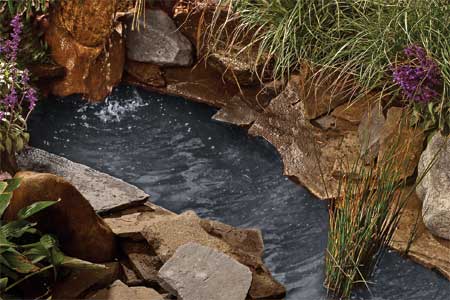 frogs, birds, fish, you, and the whole family. These
frogs, birds, fish, you, and the whole family. Theseponds may be small, may even be no larger than 3 to 4
feet in diameter. These may be built in patio
containers and barrels. Drawing wildlife in your
backyard may be done by adding water gardens and
ponds. These will not only provide enjoyment and
interest but also a natural and relaxing environment
as well.



A fish pond in your backyard may become the focal
point of your backyard conversation. So spice it up
with this tips and techniques.
Where to Put Up a Backyard Pond
Place your fish pond in a place where you can best
view it from, whether from a deck or the patio. Make
it coincide with the natural surroundings. Do not
place the pond where the sun can overheat it. Nestle
it in a shaded place but not under the trees.
Do not place the pond under the trees to avoid fallen
leaves into the pond. This technique will also provide
less maintenance to the pond. Expose the pond to
sufficient sunlight only since some aquatic plats grow
well in full sun and others do not.

Landscaping
It is best to slightly elevate the soil surrounding
the pond so that excess water will not enter into it.
Plan the drainage system of the pond, making sure that
it draws the water away from your house.
Landscaping the surroundings around your pond will
provide a natural dwelling place for birds and frogs
that need water and land. Make sure that electricity
is available if you plan to use lights, filters, or a
water re-circulating device.

Using Pond Liners
Pond liners are used to keep water from leaking into
the soil. It is almost always necessary for ponds even
if it they are situated in clay soils. Pond liners
come in different shapes and sizes. They even include
built in waterfalls or any design based on your
preferences. They are durable and convenient.
Consider a polyvinyl chloride liner (PVC liner) in
building larger ponds. In determining the size of the
PVC, you have to know the maximum length, width, and
depth of the pond. After which, multiply the maximum
depth by 3. Add the answer to the width and the
length. Now you have enough PVC to securely hold down
the pond edges.
Pond liners come in different thickness as well. The
thicker the pond liner, the more resistant it is to
punctures. Cement may be considered an optional pool
liner. However, it requires more expertise to install
and it may cost more than the regular plastic pond
liner.
However, considering that many ponds are quite small,
other plastics may be used. It may be cheaper but many
may break down easily once prolonged exposure to
ultraviolet light happens. Some plastics also may
prove to be toxic to fish.
Pond Installation
Time your pond building when the ground is not overly
wet or frozen. Dig the hole according to the right
depth and place (and secure) the pond liner. Then
landscape the pond surroundings. Remove any rocks from
the surrounding area. Add water, plants, and a pump.
Let the pond sit for a few days before adding plants
and fish. Let the plants settle for at least one week
before placing the fish.
Then sit back and enjoy your backyard fish pond!
Dan and Deanna "Marketing Unscrambled"
2 comments:
If you have one of the beautiful ponds with backyard of your house, certainly it will be more likely the house of the wild life. I would like to appreciate you for sharing the useful information with us.
Thank you for visiting our blog. So glad that you like the information on fish ponds. It really can add to the wild life enjoyment for us and is helpful for them.
Have a great day.
Dan and Deanna "Marketing Unscrambled"
Post a Comment